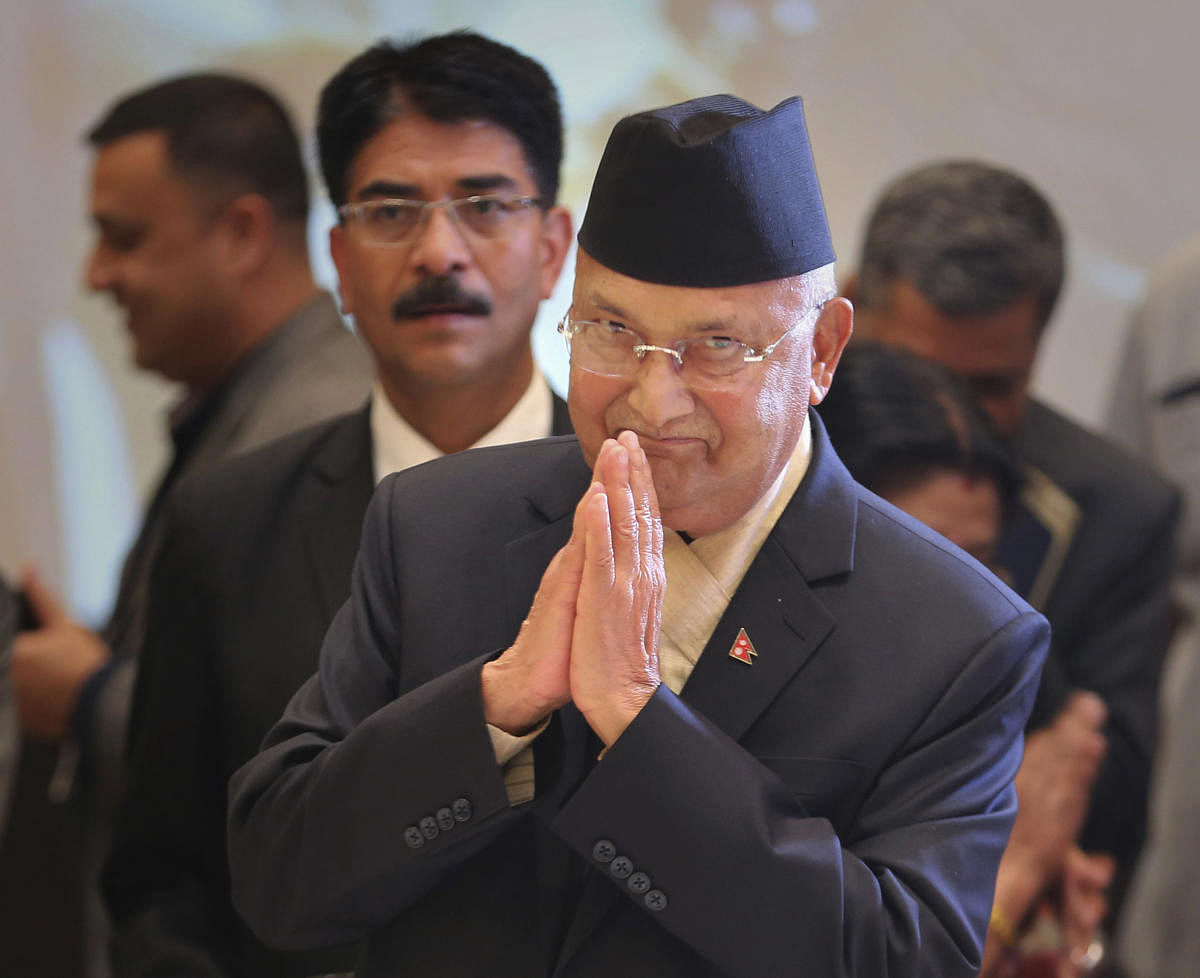
Nepali Prime Minister Khadga Prasad Sharma Oli on Monday claimed that Hindu god Ram was born in Nepal and not India and that the ‘real’ Ayodhya lies in Nepal, not in India’s Uttar Pradesh, amid strained relations between the two neighbours. Prime Minister Oli gave this statement without any concrete evidence to support his claim, stoking a controversy.
Speaking at an event at his residence in Kathmandu, Oli accused New Delhi of “cultural aggression”. He also said that Nepal had become a victim of “cultural encroachment”. He accused India of manipulating history and culture by creating a fake Ayodhya in India. He said that Lord Ram was Nepali, and was born in Ayodhya, which lies near Thori of Birgunj in Nepal.
Prime Minister Oli’s remark has come at a time when Nepal-India relations seem to be going downhill and it can further escalate tensions between the two South Asian neighbours. His bizarre comments, which are not diplomatically appropriate, can hurt the religious sentiments of millions of people.
As mentioned in the Ramayan, Ayodhya is the birthplace of Ram, and it has been accepted as such for centuries. However, due to a lack of concrete evidence, the debate has been raging for years. But Valmiki Ramayan itself is just one of the over 300 tellings and retellings of the epic. Due to the lack of archaeological evidence, every new telling of this epic is equally valid. But this new telling by Nepal’s Prime Minister, at a time when relations between the two countries is at a low, can further provoke India and ruin the environment for bilateral talks.
The issue of Ram and Ayodhya is a sensitive one in India. Recently, a decades-long controversy was settled in India’s Supreme Court, which ruled in favour of a Ram Mandir in Ayodhya, while giving the Muslims five acres of land at an alternative site to build a mosque. While the political relations between Nepal and India may be going down, the people of the two neighbouring nations still have good relations. Oli’s comments can hurt the sentiments of many Indians and affect the relations between the people of the two countries.
The recent border dispute between India and Nepal hasn’t been resolved yet. Kathmandu recently published a new political map showing the regions of Lipulekh, Kalapani, and Limpiyadhura as part of its sovereign territory. Nepal’s parliament endorsed a constitution amendment bill to update its political map, displaying the contested areas as Nepal’s. The move to release a new map came after India inaugurated a newly-built road via Lipulekh, as part of the Kailash-Mansarovar Yatra route. Nepal claims that the road traverses its territory. This has even led to India perceiving Nepal as a proxy of China. Rather than a dialogue to resolve the issue, it has resulted in a deadlock.
At this sensitive and crucial time, insensitive comments can ruin the environment for dialogue. Prime Minister Oli is facing a crisis in his party and if he is commenting to raise religious and nationalistic sentiments to fight his opponents within his party, then this is not the right time to do so. It will further deepen the tensions with India. Nationalism and religion form a potent mix that can damage the people-people relations.
This is a crucial time when the two countries should be united in fighting the coronavirus pandemic. They should also resolve border disputes with a proper dialogue. Such comments as Oli made can be harmful to creating a suitable environment for that dialogue. Kathmandu and Delhi should resolve their strained relations through diplomatic channels and dialogue before it’s too late.
(The writer is a Nepali businessman and columnist and Chairman, Tribune National Media)